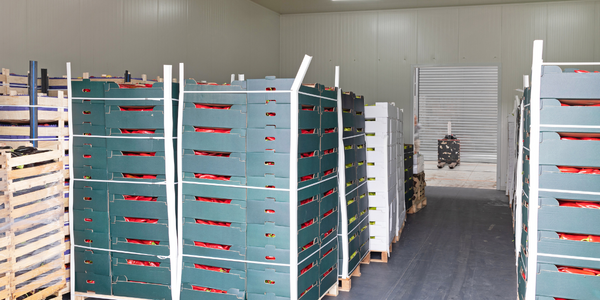Customer Company Size
Large Corporate
Region
- America
Country
- United States
Product
- COMSOL Multiphysics®
- COMSOL Server™
Tech Stack
- Multiphase Porous Media Model
- Micro-CT Imaging
Implementation Scale
- Enterprise-wide Deployment
Impact Metrics
- Productivity Improvements
- Customer Satisfaction
- Innovation Output
Technology Category
- Analytics & Modeling - Predictive Analytics
- Analytics & Modeling - Digital Twin / Simulation
- Application Infrastructure & Middleware - Data Visualization
Applicable Industries
- Food & Beverage
- Education
Applicable Functions
- Product Research & Development
- Quality Assurance
Use Cases
- Predictive Quality Analytics
- Digital Twin
- Process Control & Optimization
Services
- Software Design & Engineering Services
- System Integration
- Training
About The Customer
Cornell University, a prestigious Ivy League institution located in the United States, is renowned for its research and academic excellence. The university's Department of Biological and Environmental Engineering, led by Prof. Ashim Datta, focuses on innovative research in food engineering and other related fields. The research team, supported by a grant from the United States Department of Agriculture (USDA) Agriculture and Food Research Initiative (AFRI) program, aims to provide valuable insights and solutions to the food industry. Their work involves developing mathematical models and simulations to optimize food processing conditions, ensuring high-quality and safe food products for consumers.
The Challenge
Food companies face the challenge of achieving the right moisture and texture in puffed snacks to ensure customer satisfaction. The process of puffing rice involves complex physics, including mass, momentum, and energy transport, rapid water evaporation, material phase transition, pressure buildup, and plastic deformation. Companies need to optimize processing conditions to ensure consistent texture, flavor, moisture content, and food safety. The research team at Cornell University, led by Prof. Ashim Datta, aimed to model the dynamics and material behavior during the puffing of parboiled rice to address these challenges.
The Solution
The research team at Cornell University used a grant from the USDA Agriculture and Food Research Initiative (AFRI) program to study the transport processes in deformable porous media with phase-dependent properties, focusing on food. They developed a modeling methodology to study the physics of food processes, making it applicable to various scenarios. The team used COMSOL Multiphysics® software to analyze the interconnected mechanical, thermal, material, and fluid behavior within a puffing parboiled rice grain. They built a multiphase porous media model to study mass and momentum changes, energy transport, and large volumetric expansion. The model analyzed different phases of solid rice, liquid and gas water, and moisture transport modes. The team validated the computational model using micro-CT images to determine the expansion ratio and visualize the microstructure development. They also tested how different levels of salt affected volumetric expansion, evaporation, and material properties. The model provided insights into the optimal amount of salt, moisture content, temperature, and heating time to produce the ideal puffed rice grain.
Operational Impact
Quantitative Benefit

Case Study missing?
Start adding your own!
Register with your work email and create a new case study profile for your business.
Related Case Studies.

Case Study
The Kellogg Company
Kellogg keeps a close eye on its trade spend, analyzing large volumes of data and running complex simulations to predict which promotional activities will be the most effective. Kellogg needed to decrease the trade spend but its traditional relational database on premises could not keep up with the pace of demand.

Case Study
HEINEKEN Uses the Cloud to Reach 10.5 Million Consumers
For 2012 campaign, the Bond promotion, it planned to launch the campaign at the same time everywhere on the planet. That created unprecedented challenges for HEINEKEN—nowhere more so than in its technology operation. The primary digital content for the campaign was a 100-megabyte movie that had to play flawlessly for millions of viewers worldwide. After all, Bond never fails. No one was going to tolerate a technology failure that might bruise his brand.Previously, HEINEKEN had supported digital media at its outsourced datacenter. But that datacenter lacked the computing resources HEINEKEN needed, and building them—especially to support peak traffic that would total millions of simultaneous hits—would have been both time-consuming and expensive. Nor would it have provided the geographic reach that HEINEKEN needed to minimize latency worldwide.

Case Study
Energy Management System at Sugar Industry
The company wanted to use the information from the system to claim under the renewable energy certificate scheme. The benefit to the company under the renewable energy certificates is Rs 75 million a year. To enable the above, an end-to-end solution for load monitoring, consumption monitoring, online data monitoring, automatic meter data acquisition which can be exported to SAP and other applications is required.

Case Study
Coca Cola Swaziland Conco Case Study
Coco Cola Swaziland, South Africa would like to find a solution that would enable the following results: - Reduce energy consumption by 20% in one year. - Formulate a series of strategic initiatives that would enlist the commitment of corporate management and create employee awareness while helping meet departmental targets and investing in tools that assist with energy management. - Formulate a series of tactical initiatives that would optimize energy usage on the shop floor. These would include charging forklifts and running cold rooms only during off-peak periods, running the dust extractors only during working hours and basing lights and air-conditioning on someone’s presence. - Increase visibility into the factory and other processes. - Enable limited, non-intrusive control functions for certain processes.

Case Study
Temperature Monitoring for Restaurant Food Storage
When it came to implementing a solution, Mr. Nesbitt had an idea of what functionality that he wanted. Although not mandated by Health Canada, Mr. Nesbitt wanted to ensure quality control issues met the highest possible standards as part of his commitment to top-of-class food services. This wish list included an easy-to use temperature-monitoring system that could provide a visible display of the temperatures of all of his refrigerators and freezers, including historical information so that he could review the performance of his equipment. It also had to provide alert notification (but email alerts and SMS text message alerts) to alert key staff in the event that a cooling system was exceeding pre-set warning limits.

Case Study
Coca-Cola Refreshments, U.S.
Coca-Cola Refreshments owns and manages Coca-Cola branded refrigerators in retail establishments. Legacy systems were used to locate equipment information by logging onto multiple servers which took up to 8 hours to update information on 30-40 units. The company had no overall visibility into equipment status or maintenance history.







